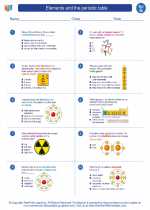Homo erectus
Homo erectus is an extinct species of archaic human that lived throughout most of the Pleistocene epoch. They are believed to have first appeared around 2 million years ago and existed until about 100,000 years ago. Homo erectus is considered to be an important species in human evolution as they were the first to migrate out of Africa and were able to adapt to a variety of environments.
Physical Characteristics
Homo erectus had a similar body plan to modern humans, with a larger brain case and a more human-like posture compared to earlier hominin species. They had a prominent brow ridge, a protruding jaw, and a larger stature compared to earlier hominins.
Behavior and Culture
Homo erectus was the first hominin species to use fire and create more complex tools, such as hand axes and cleavers. This technological advancement allowed them to better adapt to different environments and may have contributed to their ability to migrate to different regions.
Migration
Homo erectus is believed to have been the first hominin species to migrate out of Africa, spreading to parts of Asia and Europe. This expansion is significant as it represents the first long-distance human migration, demonstrating their ability to adapt to new environments and challenges.
Study Guide
- What are the physical characteristics of Homo erectus?
- How did Homo erectus adapt to different environments?
- What technological advancements are associated with Homo erectus?
- Where did Homo erectus migrate to?
- Why is the migration of Homo erectus significant in human evolution?
These questions can help guide your understanding of Homo erectus and its significance in human evolution. Be sure to explore each question in detail to gain a comprehensive understanding of this important hominin species.
.◂Science Worksheets and Study Guides Seventh Grade. Elements and the periodic table

 Activity Lesson
Activity Lesson
 Worksheet/Answer key
Worksheet/Answer key
 Worksheet/Answer key
Worksheet/Answer key
 Worksheet/Answer key
Worksheet/Answer key
 Worksheet/Answer key
Worksheet/Answer key
 Vocabulary/Answer key
Vocabulary/Answer key
 Vocabulary/Answer key
Vocabulary/Answer key
